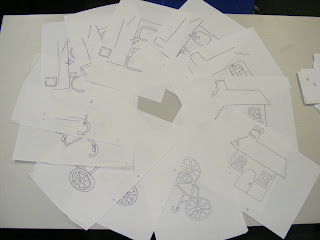Adam Elliot was born on the 2nd January 1972 in South Australia. He grew up on a shrimp farm in South Australia with his two brothers, sister and parrot. He found his talent for art at an early age, and spent 5 years studying photography, painting, pottery, and other artistic areas. He has won 34 awards including oscars, and is a unique and succcessful animator.
What type of animation is it? Describe the use of sets/script/characters/storyline. The animation is a type of claymation full of characters with extremely large eyes and noses like the style of wallace and gromit. The big features are kind of like a trademark animative technique, as the other animations by Adam Elliot do. It has partial
 aspects of substitution and all the characters have distinctive similarities about them.
aspects of substitution and all the characters have distinctive similarities about them.How would you describe the style? Why do you think Adam Elliot uses that style?
The style seems rather old fashioned and dull, with sepia affectively used. It has a pretty blank story line that seems quite basic, but its livened up by sarcastic and witty naration. The voiceover gives it a commical effect, as it narrates the life of Harvie. It involves some aspects of history in WW1 adding detail to what seems a blunt story.
What effect does it have on the audience?
The animation is really funny because of the tone the narrator uses when he's telling the story, but he also makes you feel sorry for Harvie. When his parents die you feel sentimental, but then the narrator says that "they were frozen, in the nude" which instantly makes you laugh.
Why do you think it won an oscar for best animated short in 2003?
I think that it won an oscar because its an animation thats original from others. Like Vincent, the animation is slightly twisted in a dark setting with a celebrity voiceover, but its also nothing alike to it. The animation really connects with the audience within the language it uses, and the way that its all set out. You could compare it to the likes of "wallace and gromit" or "creature comforts" because of the appearance of the characters, but as a story they are completely different
websites: http://www.imdb.com/name/nm0254178/ http://www.melodramapictures.com/


